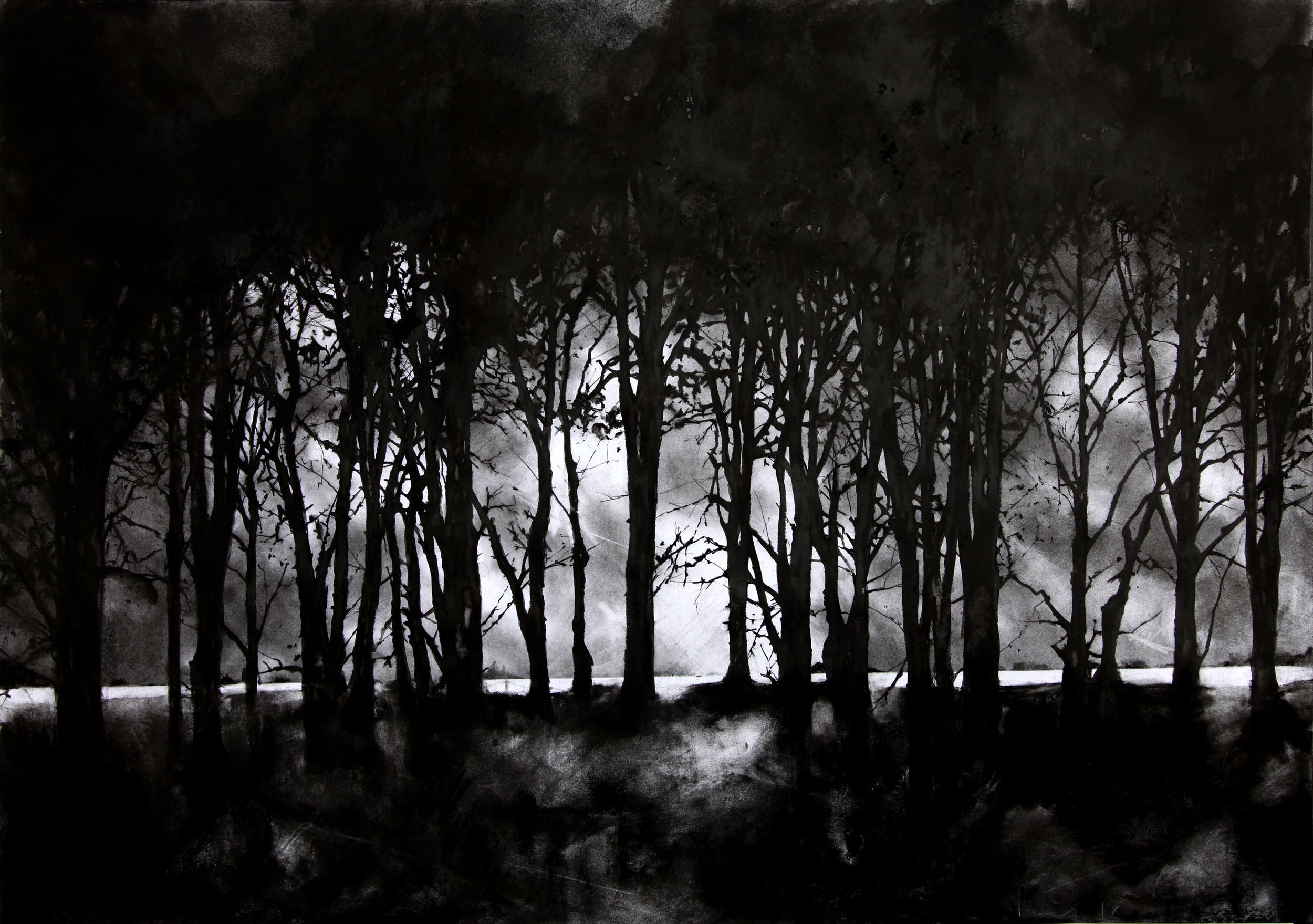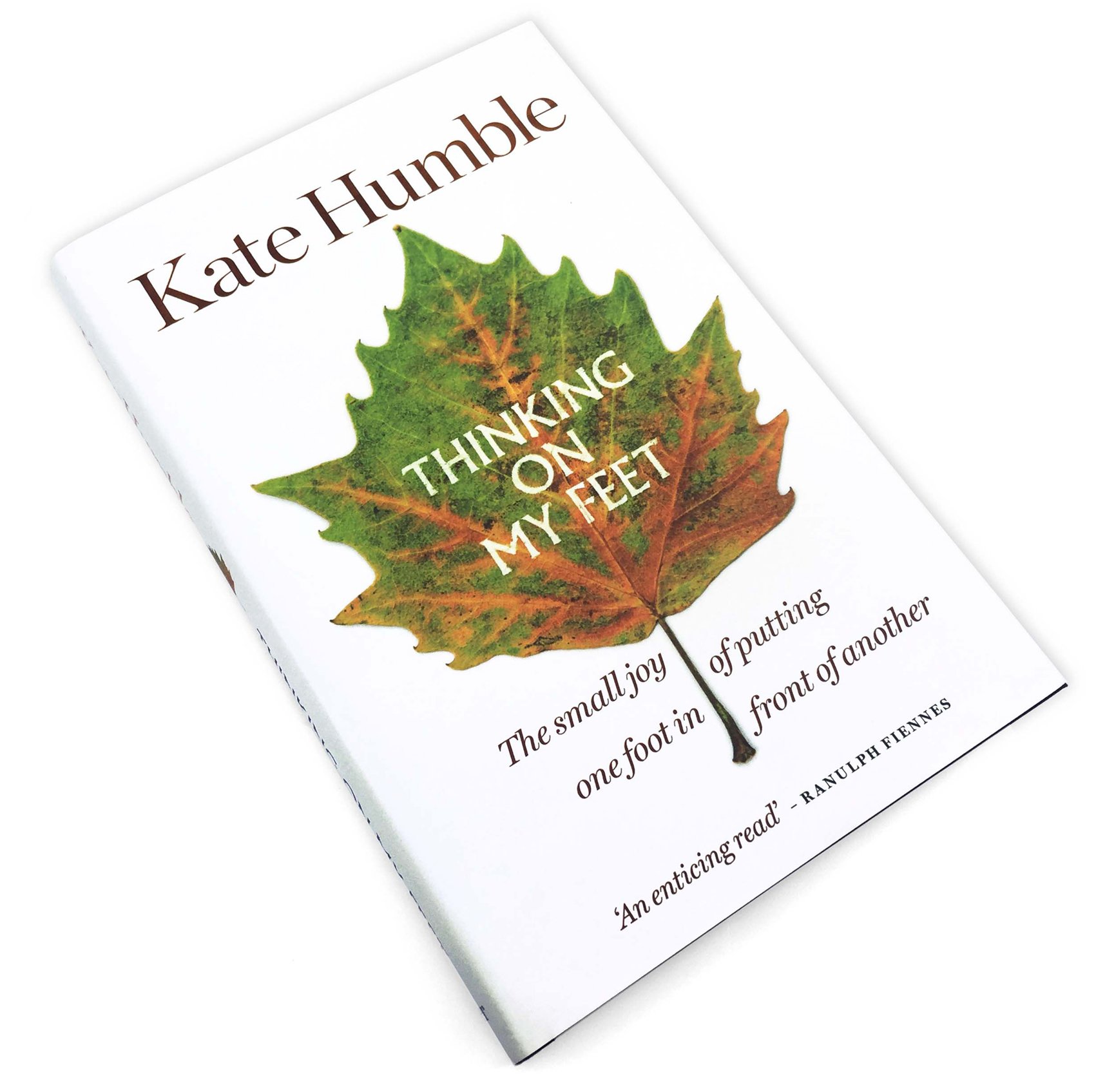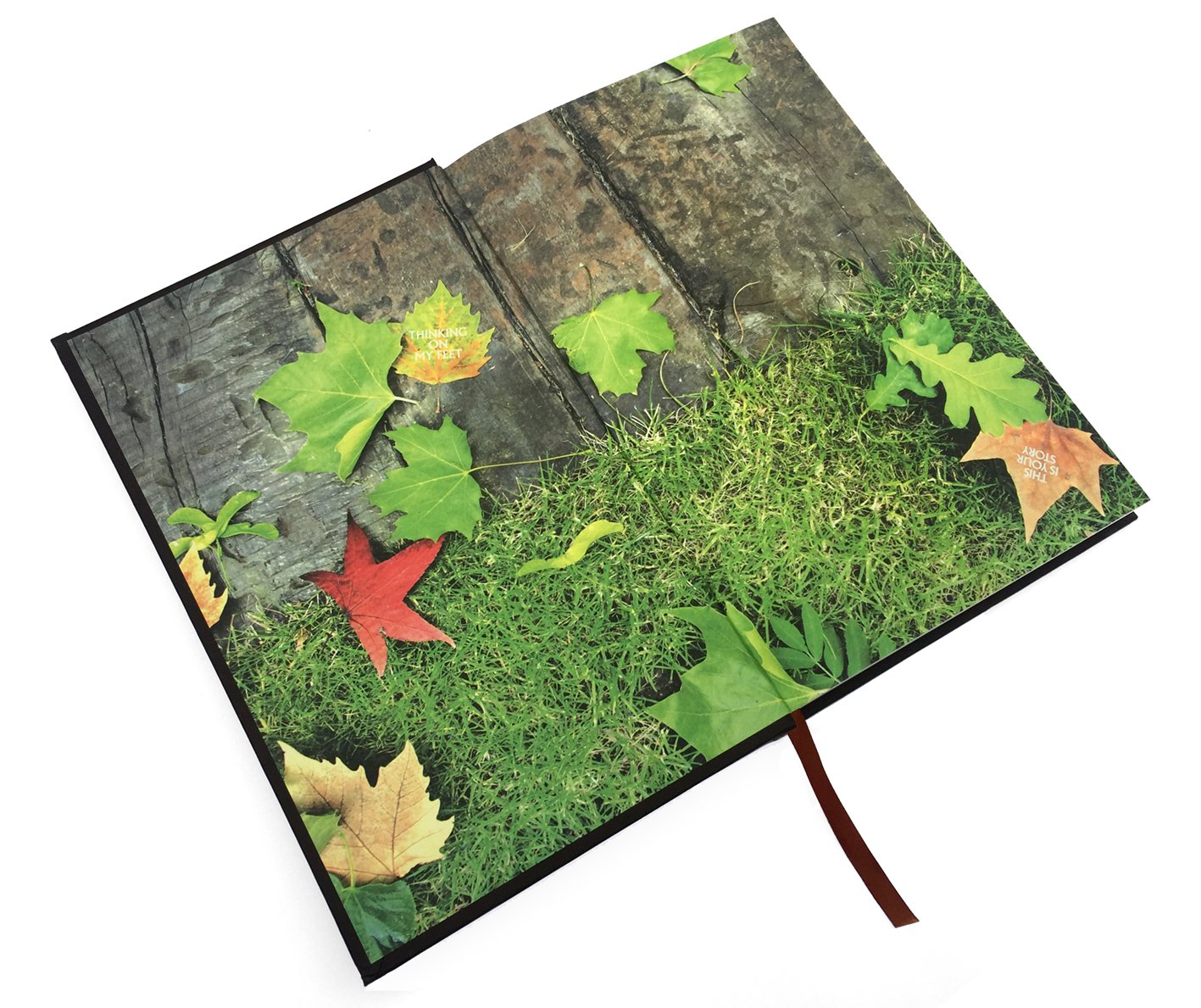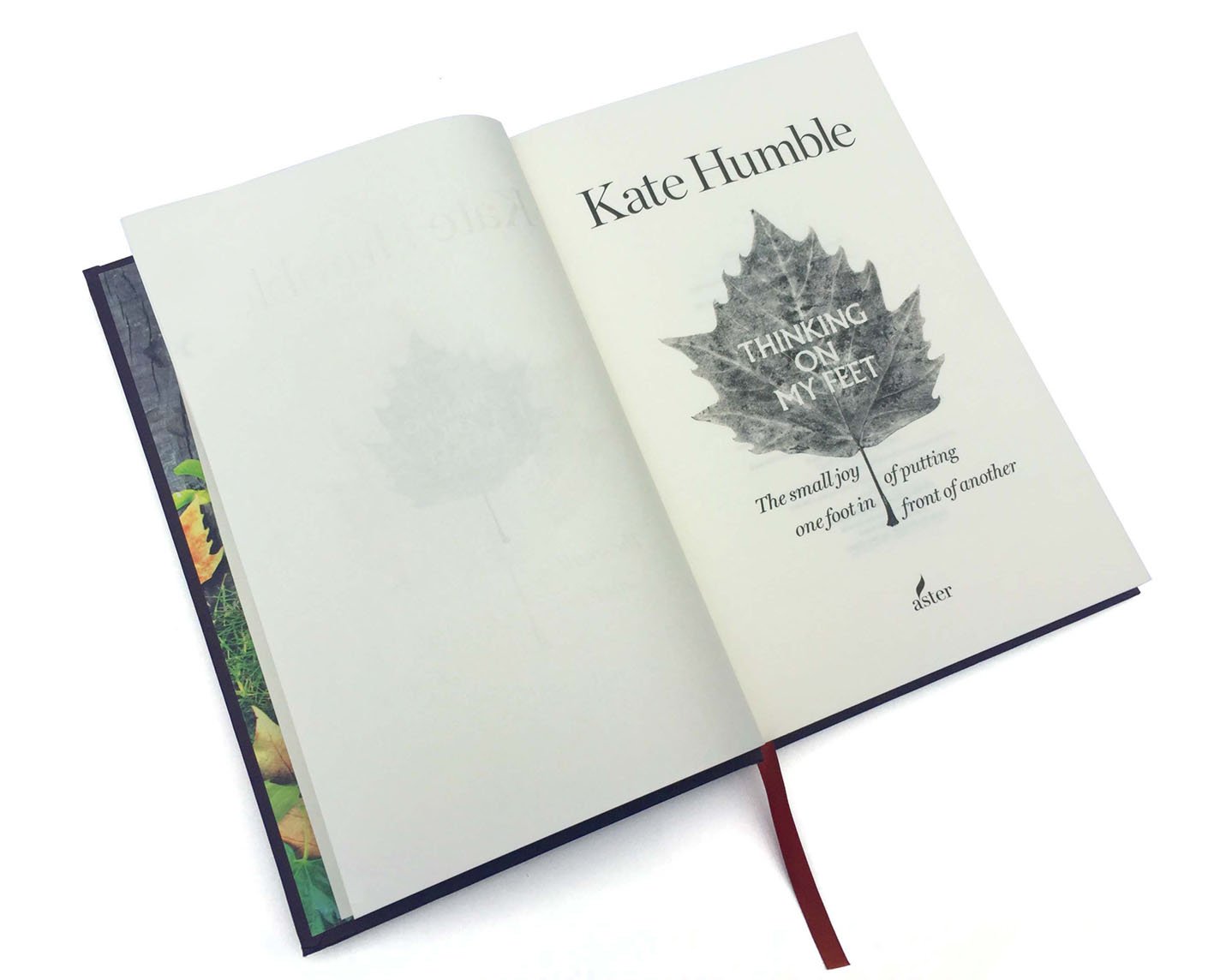ARTIST INTERVIEW: Paul West
Paul West
Please can you give me an introduction to yourself
I am a landscape painter and charcoal artist. Born in Dorset, I studied graphic design in London, choosing a course with an emphasis on art history and with ‘mark making’ (life drawing, etching, screen printing and photography). Although choosing graphic design as my career, since college days I always carried sketch books, filling them with sketches and paintings. Around 2012, it felt a like natural progression to focus more on art - as a graphic designer, I co-founded a design agency which always felt more ‘indie’ than being employed in a large corporate agency, and as a solo artist I’d like to think I’m furthering that independent way of working.
Your work is influenced by nature, what is it that interests you about the countryside?
Growing up in Dorset I was immersed in the countryside, running wild in the woods behind our house, staying up all night with friends nature watching badgers and scaring the hell out of each other with “beast in woods” stories by torchlight. Other times I’d just go out alone with my dog, sitting on hills or the cliff on the coast watching the fields or sea below and listening to Bowie’s ‘Heroes’ album repeatedly on my Walkman, and this connection of music and the landscape was integral to my upbringing and affects which is what shapes my work today. Living in a rural area has its particular calendar celebrations and this has fed a life-long fascination with folklore, folk music and the lore of the land. The countryside is an energy that connects us all and has been worshipped, feared, worked and regenerated and when I paint on canvas or work charcoal on paper, it’s an inspiring to make these connections with the landscape, recording the seasonal changes, year on year. Recurring features in my work include tractor trails that score the landscape (our transient signatures on the land) and I LOVE the melancholy of windswept solitary trees and copses. To record these things as an artist is a meditative and inspiring process.
Please tell me about your Silent Voices (leaf etchings), what is the story behind them? What messages are you trying to get across?
The idea behind the project came from an idea about our need for connection in an increasingly disconnected world. At the time, I was living in London and can remember it being a typically cold wet winter day sitting on a crammed bus, staring at people looking at their phones and then I looked outside at the fallen leaves in the road and I imagined a leaf being a metaphor for our everyday thoughts, and the millions of leaves that fall unnoticed are as infinite as the thoughts we rarely get to express. I started reading about our relationship with trees and discovered the tree lies at the heart of all tribal cultures - the Anglo-Saxon word “treow” means both ‘tree’ and ‘truth’. The Cherokee Indians called trees ‘standing people’ who provided witness for contracts between people from marriages, to pledges. The ancient Greeks said the sound of the wind in an Oak tree was the voice of Zeus, so the work imagined trees bearing witness to our thoughts, whispering back messages to us with their leaves. So, at the same time I was working on the etching series, I screen printed scores of dried leaves with messages, and wherever I went I’d have a folder of leaves I’d shake out as I was walking - many of the leaves would fall with the message face down, or would be destroyed in the rain (being printed with water-based non-toxic ink). The idea of the project was the chance encounter or discovery of a message by a stranger. There was no email address and no way of knowing who had created them, so I wondered would anyone see a leaf, and if they did, would it connect enough with them to make a connection back?
It was a few months after I dropped my final leaves when I received an email from ‘Julia’, who had found a leaf. She contacted me to tell me she had been walking through London Fields and she happened to take a short cut which wasn’t usually part of her way home, and on looking down, found a leaf with the words “It’s When You’re Frail I Love You Most”. She told me her mother had recently passed away and she was upset - she said it felt like a message from someone keeping a kind look out for her, and took the leaf home to keep by a photo of her parents. By following hashtags on Instagram, she found me and got in contact to thank me for that message, so I’m really happy the idea worked because I try to create work that connects with people.
Describe your creative process; from start to finish of one of your pieces. Where do you find your inspiration?
Wherever possible, I’ll paint ‘plein air’ or create a rudimentary sketch and then develop the painting in the studio. Whenever photographs have been used as a reference, I haven’t particularly enjoyed the process because I think a photograph constrains the outcome of the painting by being too literal. I’ll paint the canvas with a base layer of flat colour and start the process of layering and creating textures from that point. I’ve learnt to not be precious about the work that’s developing, and not to be afraid of walking away from the work and revisit it with a new pair of eyes. I really enjoy working with palette knives, misting sprays, toothbrushes and anything that can help interpret the moods or light of the landscape I’m trying to capture.
You use a variety of mediums in your artwork, which is your favourite?
I alternate between the more fluid impasto freedom of acrylic for my paintings, and the technical possibilities of working with charcoal.
What is the importance of colour in your work? How does it create a mood?
Colour is really important and it’s a palette that likes to change. When I first started painting, I was fixed on greens, ochres and blues but I now use a combination of a new hue of green, (trade secret haha) that works fantastically well mixed with white and sky-blue hues. I’ve also welcomed fuchsias and pinks into my work - largely from painting in Northumberland where the Rosebay Willowherb grows abundantly throughout the summer months. Someone at a fair said the colour in my work looks abstract, but at the same time true to nature.
Who is your favourite artist and why? Do they have an influence on your work?
Hockney is really the artist I look to time and time again. My favourite work of his is “Winter Timber” pained in 2009. When I saw it for the first time I was bowled over at the simplicity and how he had captured a moment of solitude with such a fauvist use of colour. The way he interprets the world with his tireless output with all forms of media is really out of this world. I’m thankful that such a genius is working in our time and we can enjoy his prodigious output year on year. Only a couple of weeks ago I went to the ‘Bigger and Closer’ exhibition at Lightroom in Kings Cross and that was mesmerising to sit and watch 360-degree projected works of his, camera zoomed in so far in that you could see the brush marks.
What has been your greatest achievement so far as an artist?
That’s quite difficult to answer really... I think there have been many personal moments, starting from the first time I put work up on a wall as a group exhibition in 2011 to my first The Other Art Fair in 2016, as it’s all part of the journey and each moment has that “I did it” sense of achievement - I guess one of those moments when there was a real feeling of moving forward came in 2018 when I was interviewed for feature in Kate Humble’s book “Thinking On My Feet” (published in Oct 18). Earlier that year I had my first commission to create a painting for a first-class airline In-flight magazine. I had decamped to Wales for a painting week and painted the landscape and this was sent to the agency for printing. I was also asked to supply a few paragraphs about the inspiration behind the painting and my love of walking as a way of thinking and discovering the landscape. Fast forward a few months and Kate had taken a flight, had read the magazine article and she wanted to know more about the feelings, inspirations and creativity that came from those walks. She came to the flat to interview me and while we were talking about paintings and landscapes, I happened to mention my “Silent Voices” etchings with screen printed leaves and the need for human connection, and this resonated with her to such a degree that my interview became a commission to supply a “Thinking On My Feet” leaf, and took the photography for the section dividers and end papers. I guess that’s a moment when I felt that my work was chiming with people outside the gallery or art fair circles.













